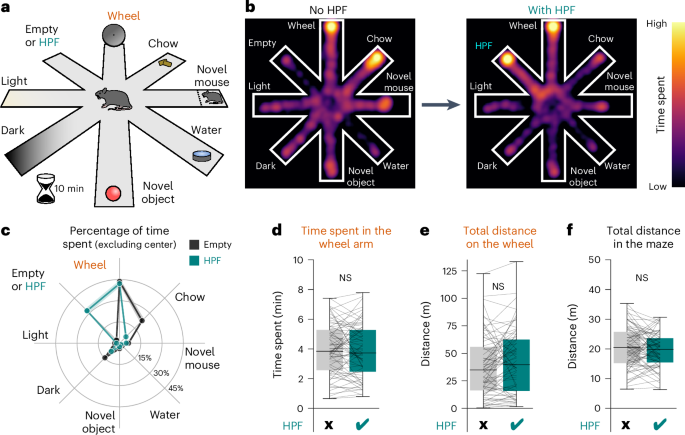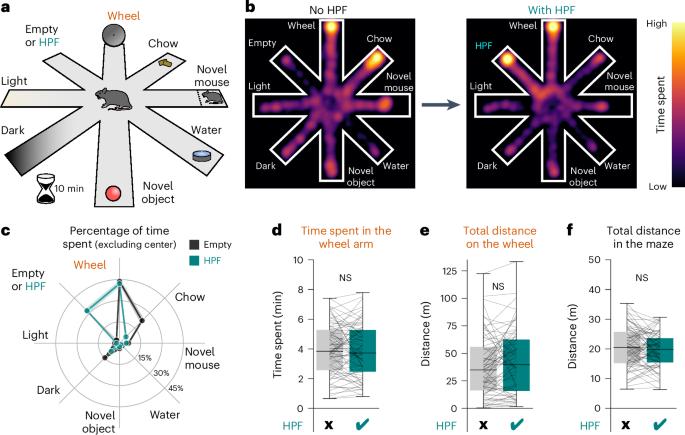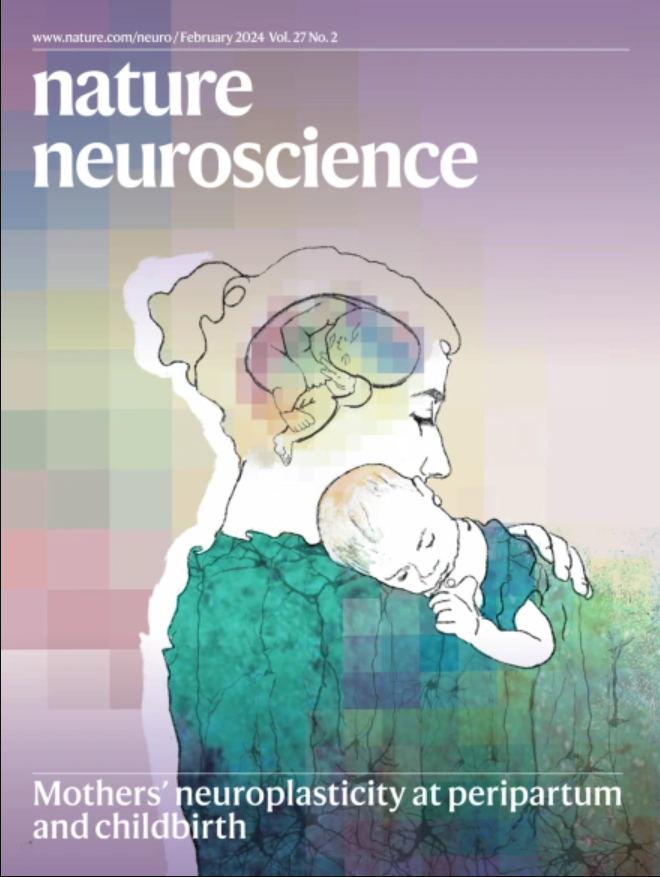催产素神经元介导耐受诱惑的自主运动
IF 21.2
1区 医学
Q1 NEUROSCIENCES
引用次数: 0
摘要
尽管体育锻炼对健康的益处众所周知,但许多人锻炼不足;是什么促使人们优先选择锻炼而不是其他选择,目前还不清楚。我们开发了一项任务,使我们能够研究小鼠如何在车轮跑步和其他自愿活动(如吃可口的食物)之间自由、快速地交替。当有多种选择时,小鼠会在没有任何外在奖励的情况下选择花大量时间在车轮上奔跑,即使增加了可口食物作为选择,小鼠也会保持这种行为。对食欲和消耗过程的因果操作和相关分析表明,这种对车轮跑的偏好是由下丘脑视网膜下/视网膜神经元(HONs)实现的。对下丘脑下视网膜/肾上腺素神经元(HONs)的操作对车轮奔跑和进食的影响具有很强的情境依赖性,在两种选择都有的情况下影响最大。总之,这些数据表明,下丘脑神经元的活动促成了 "吃-跑 "仲裁,从而导致选择运动而非进食。本文章由计算机程序翻译,如有差异,请以英文原文为准。


Orexin neurons mediate temptation-resistant voluntary exercise
Despite the well-known health benefits of physical activity, many people underexercise; what drives the prioritization of exercise over alternative options is unclear. We developed a task that enabled us to study how mice freely and rapidly alternate between wheel running and other voluntary activities, such as eating palatable food. When multiple alternatives were available, mice chose to spend a substantial amount of time wheel running without any extrinsic reward and maintained this behavior even when palatable food was added as an option. Causal manipulations and correlative analyses of appetitive and consummatory processes revealed this preference for wheel running to be instantiated by hypothalamic hypocretin/orexin neurons (HONs). The effect of HON manipulations on wheel running and eating was strongly context-dependent, being the largest in the scenario where both options were available. Overall, these data suggest that HON activity enables an eat–run arbitration that results in choosing exercise over food. What makes the brain maintain voluntary exercise despite attractive alternative options such as eating? Tesmer et al. show that orexin/hypocretin neurons are crucial for implementing the underlying valuation of eating versus running in mice.
求助全文
通过发布文献求助,成功后即可免费获取论文全文。
去求助
来源期刊

Nature neuroscience
医学-神经科学
CiteScore
38.60
自引率
1.20%
发文量
212
审稿时长
1 months
期刊介绍:
Nature Neuroscience, a multidisciplinary journal, publishes papers of the utmost quality and significance across all realms of neuroscience. The editors welcome contributions spanning molecular, cellular, systems, and cognitive neuroscience, along with psychophysics, computational modeling, and nervous system disorders. While no area is off-limits, studies offering fundamental insights into nervous system function receive priority.
The journal offers high visibility to both readers and authors, fostering interdisciplinary communication and accessibility to a broad audience. It maintains high standards of copy editing and production, rigorous peer review, rapid publication, and operates independently from academic societies and other vested interests.
In addition to primary research, Nature Neuroscience features news and views, reviews, editorials, commentaries, perspectives, book reviews, and correspondence, aiming to serve as the voice of the global neuroscience community.
 求助内容:
求助内容: 应助结果提醒方式:
应助结果提醒方式:


